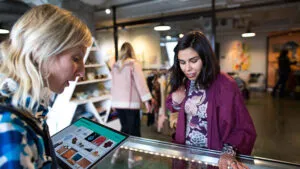
What’s Wrong With Shrinkage for Retail Companies in Canada
We all laugh a little bit when we’re reminded of the episode from Seinfeld when George Castanza suffered from “shrinkage” after being a cold pool. To a retailer, Shrinkage is no laughing matter.
The loss that retailers include in shrink includes shoplifting, associate theft and administrative errors along with vendor fraud. Grocers are even more detailed as they also face losses from products that go stale or spoil and need to be written off.

For retailers, operational issues can impact on more than 60% of their losses, theft and misdeed accounts for the balance. In retail where margins are thin at the best of times this is an issue that deserve a lot of attention. Fortunately, there are a lot of new technologies that are helping to address these concerns.
Let’s look at associate theft for a moment. One of the most common schemes is called “sweethearting”. It happens when a cashier has an accomplice come through the checkout and does not charge then the full amount, if at all for some of the items in their purchase. Video surveillance is part of the equation, today’s technology is sophisticated enough to identify when something is not scanned but still bagged. Analytic tools can also identify patterns of anomaly. (i.e. specific loyalty members consistently seek out the same cashier and the average transaction value falls out of normal limits).

Outside of collusion, there are a great many thieves who work without the help of staff. RFID (radio frequency identification) technology is something that generates a signal which can be tracked inside the store. In recent years this has become very inexpensive. One store that has made great use of this is The Real Real. Every item in their store is imbedded with a thread-sized microelectronic tag. These washable electronic tags can be woven directly into a garment by the manufacturer, which makes them almost impossible to remove. They can also provide information about the entire lifecycle of the garment, such as the date of manufacture and where it originated, (more on that in a future article about Blockchain and retail). These tags allow the staff to find and follow merchandise through the store or set off an alarm when it leaves without being deactivated.

While it may seem like a scene from Minority Report, the use of video analytics is coming into its own. This isn’t just a case of recognizing known offenders, the tools associated with technology are sophisticated enough to analyze a person’s facial expression to identify a propensity for theft.
It’s becoming a wild place where the respect for consumer privacy must be balanced by the need to secure the store and its merchandise. But as new store formats (like autonomous checkout) become more common, security measures like this will be something we see as the price of admission.




